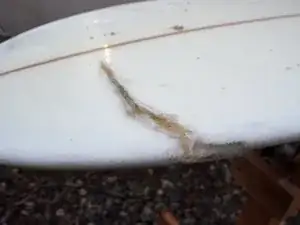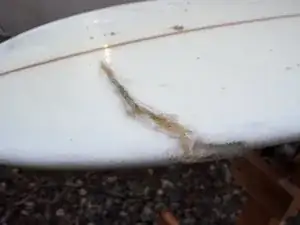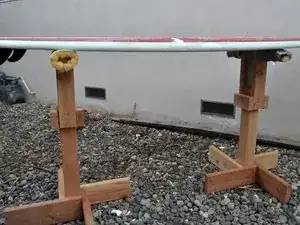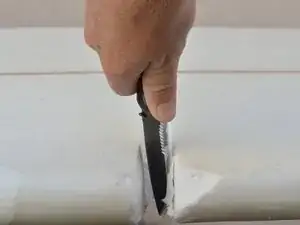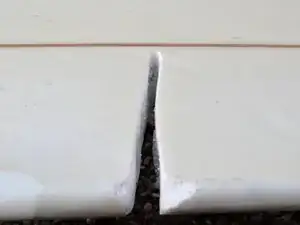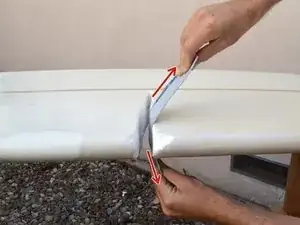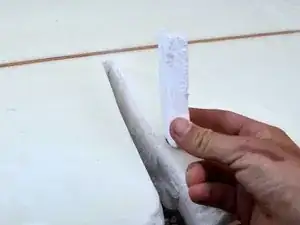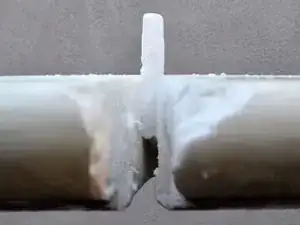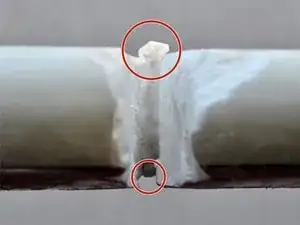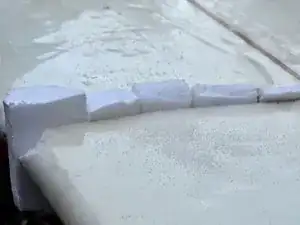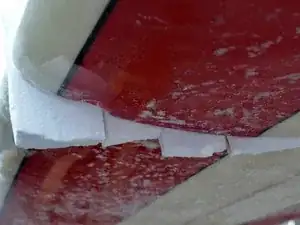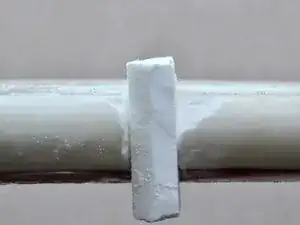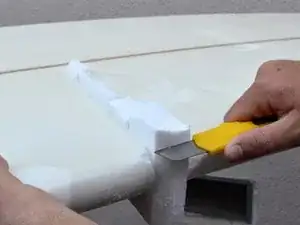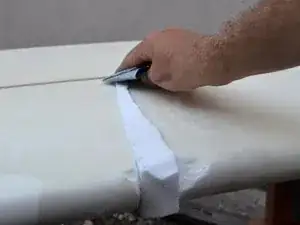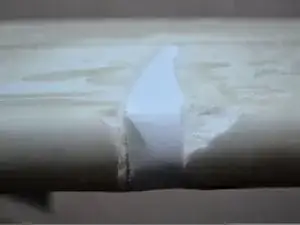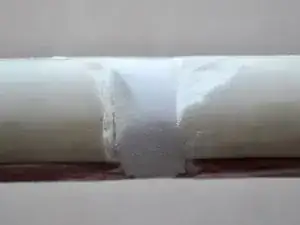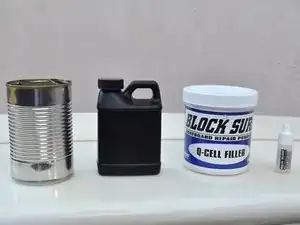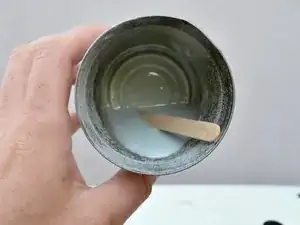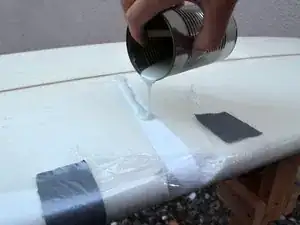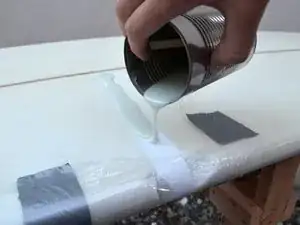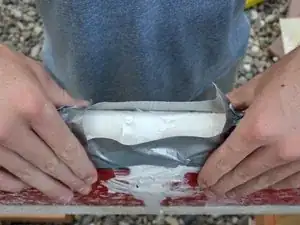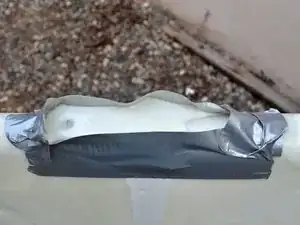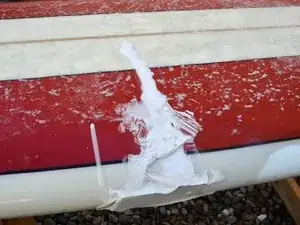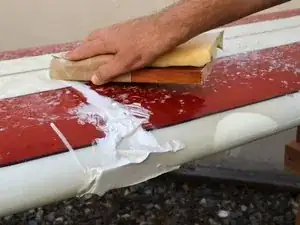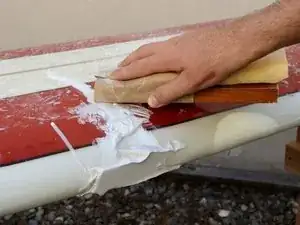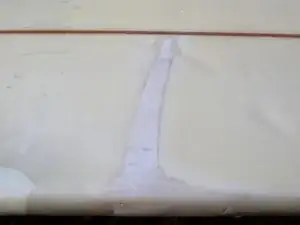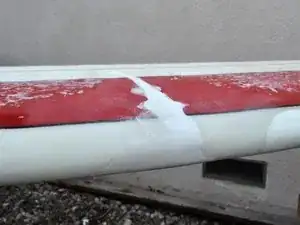Einleitung
This guide will walk you through the process of repairing major damage to your polyurethane surfboard (not epoxy). Steps will cover removal of damaged fiberglass and foam, preparation for repair, foam replacement, re-glassing, and sanding to finish. This is a long and challenging process and will likely take more then one day if you've never done any internal repair.
Werkzeuge
Ersatzteile
-
-
Set up your work area.
-
It is nice to have a stable, firm platform to work on. I happened to have a homemade surfboard-shaping stand to work on.
-
-
-
Remove old foam and fiberglass with a sharp knife, utility knife, or really anything. I found that needle nose pliers work very well for grabbing and twisting.
-
-
-
Sand the inside foam that you just revealed with rough sand paper until it is vertical and flush.
-
Place the sandpaper through the crack and pull back and away from the crack. This will smooth down the edges of the thin fiberglass on the top and bottom.
-
-
-
You will fill the crack with a series of small foam wedges.
-
Use the surform to grind down the sides of the piece so that they are flat and parallel.
-
You want the wedge to barely fit into its position. You will really have to jam it in with some force. Be careful not to snap it though, as the foam is very brittle.
-
The wedge should be tall enough so that it extends out both the top and bottom of your repair area. The portion hanging out will be sanded down in a later step.
-
-
-
Repeat the previous step until the wedges extend out past the rail.
-
Notice how each piece extends beyond the top and bottom of the board.
-
-
-
Trim down the overly excess pieces. Don't trim below the deck. This step will just make sanding a little bit easier.
-
-
-
Sand the overhanging foam down with rough sand paper. Don't be afraid to hit the fiberglass, it will be fine.
-
Sand the foam so that there is a slight concave relative to the deck (or bottom of the board). This will be where the resin will sit.
-
Be careful around the rail. Use the fiberglass of the non-damaged rail to guide the shape of the foam here.
-
-
-
In your mixing cup, pour enough resin to cover the entire area thoroughly.
-
Mix in an even amount of Q-Cell filler and stir until well-mixed.
-
Once well mixed, add catalyst (hardener) as normal : i.e., 5-6 drops per 20ml of resin (a drop or two more if the weather is cold; a drop or two less if the weather is warm).
-
-
-
Apply mixture over the foam. Do not worry about overflowing slightly onto the board as this will be sanded off. However, do try to avoid runs.
-
Allow mixture to cure for 1.5 hours.
-
Repeat on the other side of the board.
-
-
-
To glass the rail, make a 'dam' out of tape. This will catch the resin and create a pool to cover all areas of the rail.
-
Using the same mixture ratio as in the previous step, fill the dam. When pouring in the mixture, make sure the top of the liquid is flush with the rest of the rail.
-
Wait and hour and a half for the resin to cure.
-
-
-
Remove all tape and begin sanding with rough grit sand paper.
-
Put some elbow grease into it. Small scratches around the repair will be buffed out later.
-
-
-
Using finer grit sand paper, buff the repair and the area around it until smooth.
-
You're all done!
-
Ein Kommentar
This guide showed how to fill the gash, but stopped before showing/explaining how to re-glass over that area. If this repair is “done” without reglassing over the gash, that board will break soon, since the skin provides most of the structural strength and the gash interrupts that structure.
